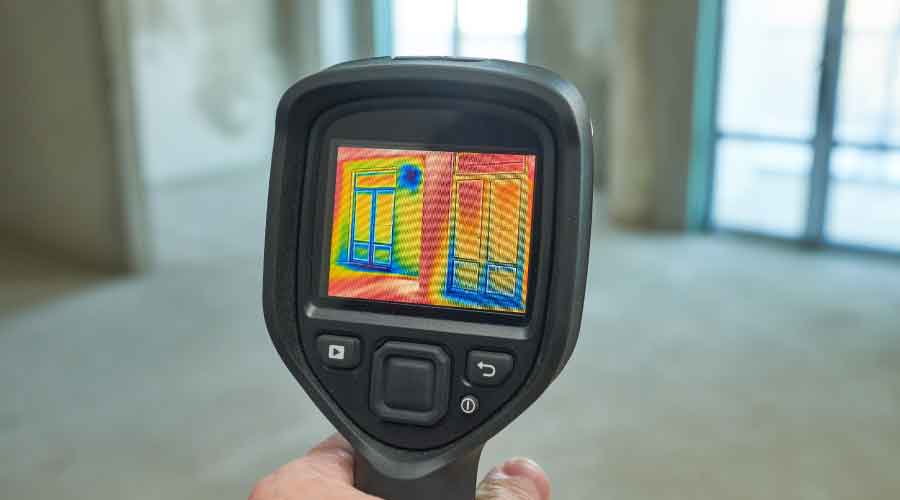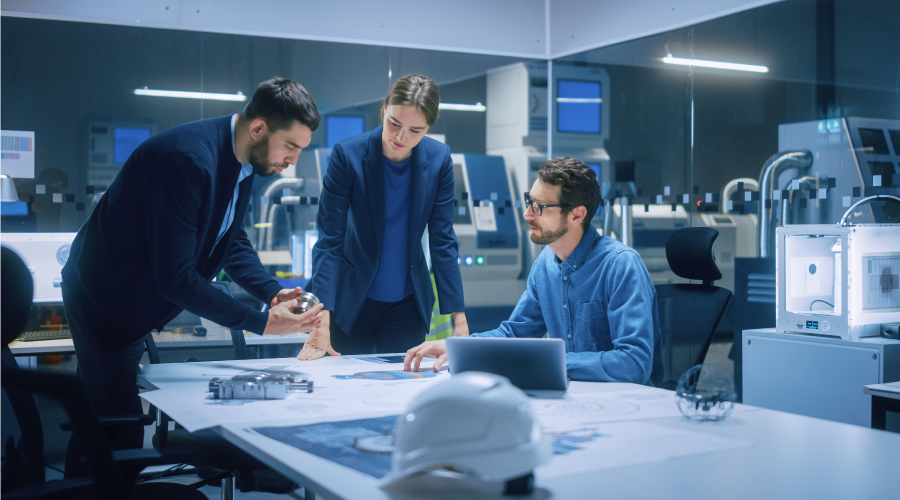How to Maximize Infrared Thermography for Top Facility Performance
To ensure the success of infrared applications, managers need to understand equipment specifications and typical applications in and around facilities.
When it comes to the use of infrared inspection, commercial and institutional facilities generally do not differ significantly from industrial facilities. The standard applications of the technology on electrical and mechanical systems, building envelopes and low-sloped roofs all provide maintenance and engineering departments with condition assessments and energy-saving opportunities.
To ensure the success of infrared applications, managers need to understand equipment specifications and typical applications in and around facilities.
Equipment considerations
Over the past 10 years, infrared equipment has become affordable for everyone, procedures for inspections are more precise, and more managers are adding this technology to their toolboxes. Not to be underestimated with the lowering of equipment cost is the need for training. A thorough understanding of heat transfer, specific applications, thermal failure modes and safety also is crucial to a successful infrared inspection program.
Infrared cameras are more affordable than ever. To ensure managers select the most appropriate camera for the job, they need to understand some basic specifications.
The detector resolution should be 120x160 pixels at a minimum. Some cameras have smaller detectors, and front-line technicians can use these cameras for simple checks. But applications for these cameras generally are limited.
Managers also need to consider the lens field of view and interchangeability. In addition to detector size, these features will establish spatial and measurement resolution. These resolutions define the smallest object that can be seen and measured at a given distance with a given camera-lens combination, respectively.
A camera’s thermal sensitivity should be less than 100mK, suggesting the camera can distinguish the difference between an object that is 30 degrees Celsius (C) and one that is 30.01 degrees C. Typical measurement accuracy should be +/-2 percent or +/-2 degrees C. Other considerations include the camera’s ergonomics, LCD display, focus, visual imaging and software to analyze images and generate reports.
Electrical components
Technicians can use infrared imaging to inspect incoming power, generators, UPS, and battery backup all the way down to PLCs and low voltage/current controls for high-resistance connections and load imbalances. There are other failure modes, but these are the most common.
Electrical safety is the primary concern for these inspections. An understanding of NFPA 70E-2021, site electrical safety requirements, qualified electrical escorts, and proper PPE are required at a minimum.
Insurance companies typically require or request electrical inspections annually. Managers need to remember that annual inspections are about reducing risk, not increasing reliability and safety.
The inspection route should include pad mount and dry transformers, metal-clad switchgear, horizontal and vertical bus, motor control centers, distribution panels and panelboards. Technicians also should inspect backup systems, but special procedures might need to be established to provide loading on these systems for proper testing.
One of the most misunderstood concepts for electrical inspections is that electrical systems need to be loaded. Daytime typically is the best time for an inspection. There also will be significant differences in winter loading versus summer loading on many systems, which suggests the need for at least semiannual inspections. Technicians also must open electrical equipment to provide a direct line of sight.
A special note on panelboards: All panels must be removed, including the dead front. This step allows for line and load side inspection of the breakers, the neutrals and the main. Facilities might have large numbers of panelboards, and they are more critical than ever, given the number of computers and systems running off 120 volts. Also, solar panels themselves show thermal failure modes.
Technicians also should conduct infrared inspections of mechanical equipment, including motors, pumps, fans, blowers, gearboxes, tanks, chillers, boilers, and steam traps. Components such as bearings, V-belts and valves have thermal failure modes that can be detected with an infrared camera. These systems need to be loaded and operating long enough to reach a steady-state operating temperature.
Larger equipment might have protective covers that require removal, or they can conduct inspections through grills and grates. Supporting procedures should be developed to optimize these inspections.
Low-slope roofs
In smaller buildings, technicians can inspect most low-sloped roofs by systematically walking the roof after sunset and checking the immediate surrounding roof surfaces. Other options include aerial inspections using drones.
Proper training, experience, permitting and licensing might be required. Proper inspection to locate wet insulation in roofing systems using infrared thermography requires conditions that include solar loading, a clear night, a dry roof, and light or no wind per ASTM 1153-10 (2015). Wet insulation will appear warmer than dry insulation after a day or so of loading and after time for that heat to radiate to deep space on a clear night. The difference in temperature is due to the high thermal capacitance of water.
Safety considerations for roof inspections include:
- at least two people working on the roof, one as the thermographer and one as a spotter and to help mark out areas of wet insulation.
- a pre-inspection walkdown in preparation for work in low-light conditions
- following guidelines in OSHA 1910.28(b)(13)(i) for safe approach distances to the edge of the roof.
Building envelope applications
Technicians can use infrared technology to survey building enclosures to identify:
- insulation defects and voids
- air leaks and sound transmission
- thermal bridges between interiors and exteriors
- moisture, including rain, melt, interstitial or surface condensation and plumbing water.
Technicians should conduct interior and exterior inspections during evenings or at night to ensure the best results. One of the most important required inspection conditions is an interior to exterior temperature difference of at least 10 degrees Celsius for insulation and 5 degrees Celsius for air leaks.
Envelopes for large buildings can be classified into four major groups:
- masonry — solid load-bearing, cavity wall, cladding with stud wall back up
- pre-cast concrete — cladding only, composite panels
- metal and glass curtain walls — window walls, curtain walls
- insulated steel assemblies — multiple cladding types with interior metal liners.
Because of the variety of building materials, building inspections can be complex and require a knowledge of materials and designs. For example, variations in thermal capacitance of building envelope assemblies can be influenced by solar loading for a couple of hours on low-mass walls, including glass, metal curtain walls, and insulated steel buildings. But the effects of the sun on solid masonry or concrete buildings can last six-eight hours, greatly influencing the thermal patterns during an inspection.
A pressure difference must be established interior to exterior for the detection of air leaks. This is typically handled by the HVAC system. Air is not visible using an infrared camera, but technicians can see the effects of warm or cool air moving across a surface.
Moisture can be detected as a result of several conditions, including evaporative cooling on affected surfaces, increased thermal capacitance, or the difference in thermal conductivity between wet and dry insulation. In the right conditions, one or more of these conditions might be in play. In the wrong conditions, none of these conditions might support the detection of moisture in construction materials.
Inspection strategies
Managers can employ a range of inspection methodologies for these building systems, equipment and components.
Exception reporting is the most common, especially in inspecting electrical systems. This approach identifies and reports exceptions of variations from what is considered normal operating temperatures. For example, the A phase line side is warmer than the B and C phases on a molded case circuit breaker, suggesting a high resistance connection.
Another approach is establishing a baseline. In this situation, technicians capture and save multiple infrared images for future comparison. This approach is more typically used on mechanical or critical assets.
One critical aspect of routine inspections is documenting the operating conditions of the asset and the environmental conditions.
Whether meeting insurance requirements or improving reliability and site safety, routine infrared inspections are fundamental processes in minimizing risk and unscheduled outages by monitoring the condition of assets without interrupting operation. Performing such inspections with trained and qualified personnel will help ensure quality analysis and sound decision-making.
Roy Huff is vice president of The Snell Group. He is a partner specializing in auditing, mentoring and consulting services for a broad range of industries.
Related Topics:












